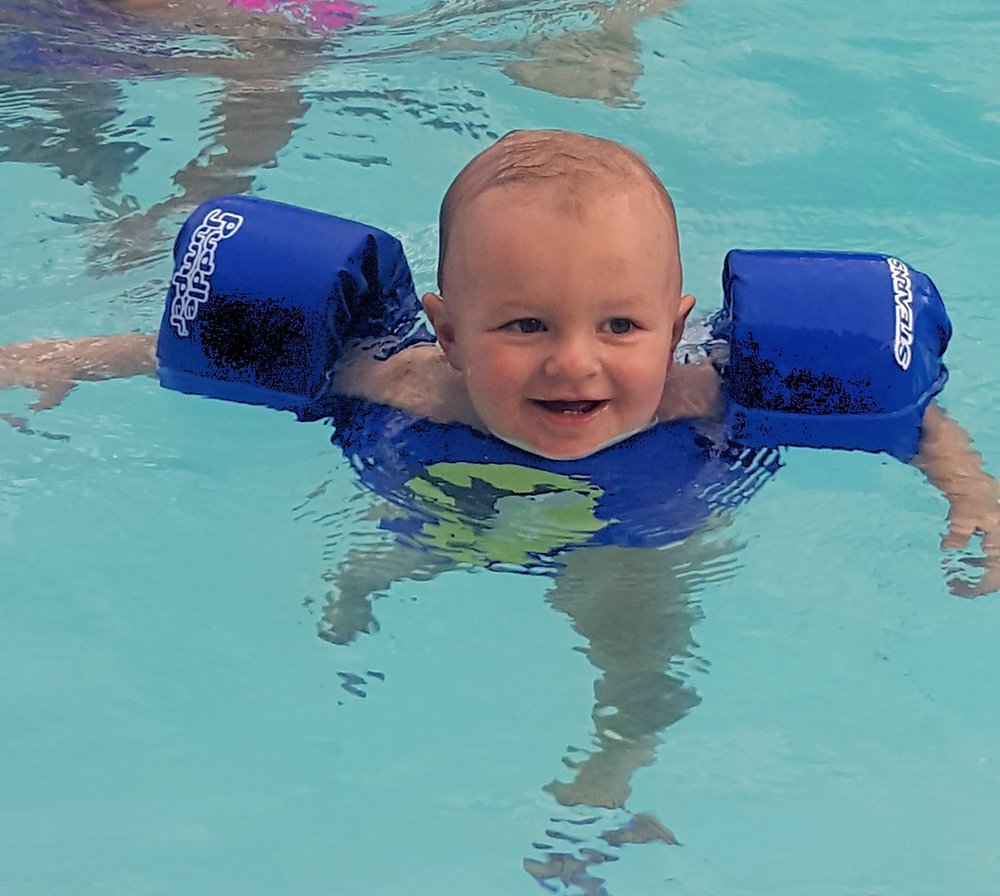Throw Away Your Puddle Jumpers…
SLWM’s main focus first and foremost is to foster essential water safety skills and ensure the safety of all swimmers that take lessons with us. In this three-part blog series, we will explore why we discourage the use of Puddle Jumpers, with a particular focus on the importance of body positioning.
Body Positioning and the Limitations of Puddle Jumpers
More Harm than Good?
Body positioning is a critical aspect in the process of learning to swim. It involves maintaining a balanced and streamlined horizontal position in the water, allowing the swimmers’ eyes to look down at the bottom of the pool, and their feet to float up. Puddle Jumpers train swimmers to grow comfortable in a vertical body position in the pool, with feet on the bottom of the pool and eyes up. This is a sinking position without a flotation device, and can hinder the development of proper body positioning in young swimmers for several reasons.
Body Positioning for Buoyancy: When learning to swim, it's essential for students to understand how to position their bodies to maintain buoyancy. Puddle Jumpers, with their bulk and buoyancy support, can give children a false sense of balance in the vertical position and prevent them from learning to float on their back or front in a horizontal position with their eyes in the pool and feet floating at the surface.
Limited Range of Motion for Arms and Legs: Puddle Jumpers consist of arm floats and a chest piece that can restrict the natural movement of a child's arms and legs. This limitation can impede their ability to practice proper arm motions and we frequently see children that swim in Puddle Jumpers come in with a bicycle kick motion below their torso, rather than a straight leg kick. It can take a very long time to retrain kiddos in the correct technique.
Delayed Development of Skills: Puddle Jumpers often lead to dependence on the device, delaying the development of critical water safety and swim skills.
Swim Lessons with Mary prioritizes teaching swimmers not only how to stay afloat but also how to swim confidently, with correct technique, and safely. Puddle Jumpers, while initially providing buoyancy, can hinder a student's ability to master body positioning, leading to potential setbacks in their swimming journey. The best way to practice at home is to swim with your child, and encourage practicing games and techniques learned at each lesson. In the event that you cannot be in the pool working with your swimmer, a US Coast Guard Approved safety vest is recommended to ensure they are water safe, but also allow them to have full range of motion with their arms. If you are able to practice with your swimmer in the pool, but feel they may need some additional floatation help, SLWM recommends these vests to aid in flotation. They have removable padding to encourage increased independence as the swimmer improves. These are not US Coast Guard Approved and should only be used under direct supervision during practice time.

